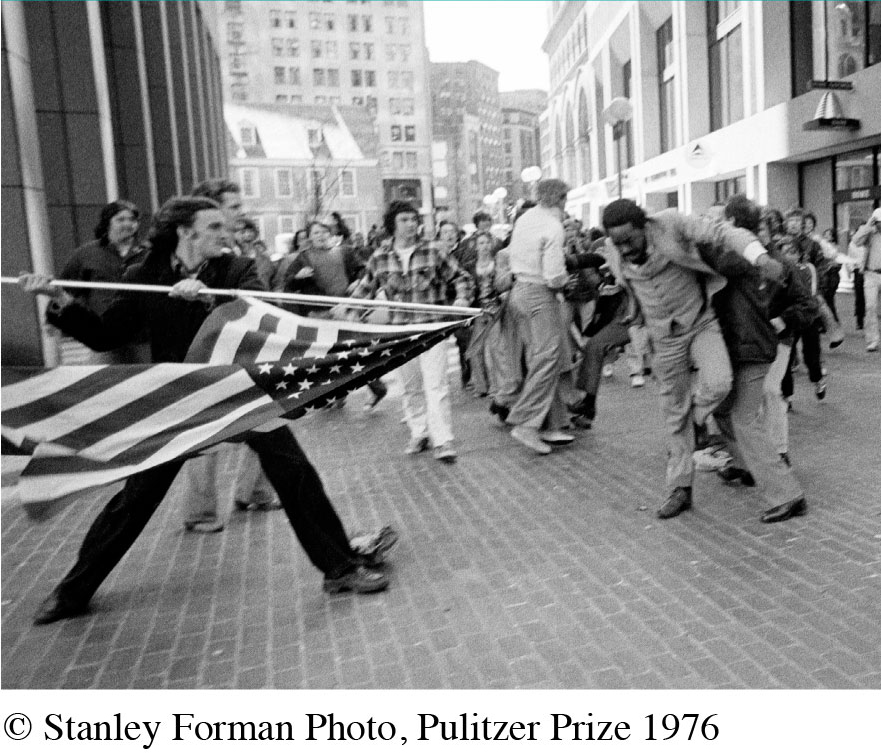Mass Media and the Process of Communication
To understand how mass media shape the communication process, let’s look at the stages a medium goes through on its journey to becoming a mass medium. Then let’s examine the ways in which the media have affected everyday life.
The Evolution of a New Mass Medium
A new medium emerges not just from the work of inventors, such as Thomas Edison, but also from social, cultural, political, and economic changes. For instance, the Internet arose to meet people’s desire to transport messages and share information more rapidly in an increasingly mobile and interconnected global population.
Typically, each media industry goes through three stages in its evolution. First is the development stage (sometimes referred to as the novelty stage). During this stage, inventors and technicians try to solve a particular problem, such as making pictures move, transmitting messages between ships and shore, or sending mail electronically.
12

macmillanhighered.com/mediaessentials3e

Agenda Setting and Gatekeeping
Experts discuss how the media exert influence over public discourse.
Discussion: How might the rise of the Internet cancel out or reduce the agenda-setting effect in media?
14
Second is the entrepreneurial stage, in which inventors and investors determine a practical and marketable use for the new device. For example, the Internet has some roots in scientists’ desire for a communication system that could enable their colleagues across the country to share time on a few rare supercomputers.
Third is the mass medium stage. At this point, businesses figure out how to market the new device as a consumer product. To illustrate, Pentagon and government researchers developed the prototype for the Internet, but commercial interests extended the medium’s usefulness to individuals and businesses.
Debating Media’s Role in Everyday Life
Even as far back as ancient times, human beings have discussed and debated the media’s merits and dangers. The earliest recorded debates in Western society about the impact of the written word on daily life date back to the ancient Greeks—in particular, to Socrates, Euripides, and Plato. These men argued over whether theatrical plays would corrupt young people by exposing them to messages that conflicted with those promulgated by their teachers.
Today, we still debate these sorts of questions. At the turn of the twentieth century, for example, newly arrived immigrants to the United States who spoke little English gravitated toward vaudeville shows and silent films, which they could enjoy without having to understand English. These popular events occasionally became a flash point for some groups. For example, the Daughters of the American Revolution, local politicians, religious leaders, and police vice squads feared that these “low” cultural forms would undermine what they saw as traditional American values.
Since then, print, electronic, and digital communications have extended their reach, and people have begun spending more time consuming them (see Table 1.1). Mass media now play an even more controversial role in society. For instance, some people are frustrated by the overwhelming amount of information available. Others decry what they view as mass media’s overly commercial and sensationalistic quality. In their view, too many talk shows exploit personal problems for commercial gain, and too many TV shows and video games feature graphic violence.
People also keep grappling with the question, To what extent do mass media shape our values and behaviors, and to what extent do our values and behaviors shape the media? Researchers have continued searching for answers to this question. For example, some have designed studies to determine whether watching violent TV shows makes viewers more likely to commit violent acts. Other scholars argue that violent TV shows don’t cause violent behavior in viewers; rather, people who already have violent tendencies are drawn to violent TV shows. Still others suggest that certain variables—such as age, upbringing, or genetic predisposition—might be the root cause of violence. Research into such questions of media and violence hasn’t yielded conclusive answers, but it does encourage us to keep asking questions and to examine the approaches we use to analyze the media’s role in our lives.
15
| Year | Total TV |
Broadcast & Satellite Radio |
Newspaper | Consumer Internet |
Video Games |
Total* |
|---|---|---|---|---|---|---|
| 1999 | 1,427 | 939 | 205 | 65 | 58 | 3,280 |
| 2002 | 1,519 | 991 | 194 | 147 | 70 | 3,430 |
| 2006 | 1,555 | 975 | 179 | 190 | 82 | 3,499 |
| 2009 | 1,562 | 984 | 165 | 203 | 96 | 3,555 |
| 2012 | 1,597 | 729 | 150 | 197 | 142 | 3,515 |
| Seven- and Six-Year Changes | ||||||
| 1999–2006 | +128 | +36 | –26 | +125 | +24 | +219 |
| 2006–2012 | +42 | –246 | –29 | +7 | +60 | +16 |
*Total hours includes time spent with recorded music, consumer magazines, consumer books, home video/DVD, box office, interactive TV, and wireless content, and time spent media multitasking—using media simultaneously.
Data from: Veronis Suhler Stevenson Communications Industry Forecast

Finally, people have expressed concern about the financial power of mass media industries. In the United States, these industries earn more than $200 billion annually, then reinvest those revenues to research how we choose our media content, what we do with that content, and how they can better serve our needs and influence our behaviors (from shopping to voting) so that they can make more money.
Like the air we breathe, the mass media surrounds us, and we often take its impact, like that of the air, for granted. And if we don’t take it for granted, we frequently can’t agree on its quality. To monitor the media’s “air quality” more proactively and productively, we must become media literate. We can start by examining several models for understanding media’s nature and impact.